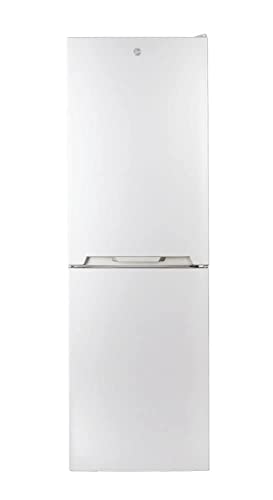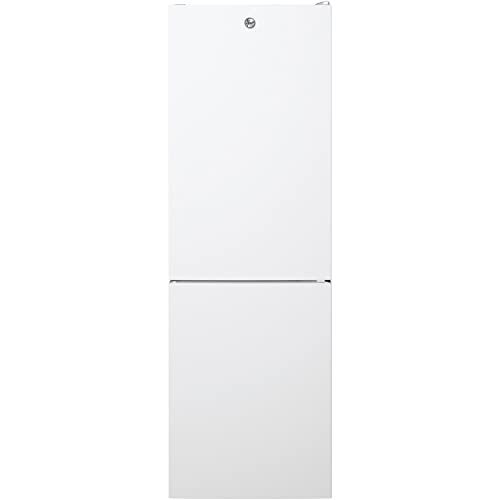 Chest Freezers For Outbuildings
Chest Freezers For OutbuildingsYou can store any leftover food in a chest freezer to use throughout the year, and reduce trips for groceries. It also makes cooking at home more convenient.
 If you plan to put your freezer in a shed or garage that is heated, look for models that are specifically designed to work in this type of environment. Also, look for one that includes wire storage baskets that help keep foods organized.
If you plan to put your freezer in a shed or garage that is heated, look for models that are specifically designed to work in this type of environment. Also, look for one that includes wire storage baskets that help keep foods organized.Size
Chest freezers can be found in outbuildings or garages. They are ideal for those who want to store their purchases that can be frozen. They're generally less expensive than upright freezers, and offer more storage (around five bags) and cost less. This Currys own brand model, for example offers a great value and has a lid that is counterbalanced and more accessible than the majority of. It is also equipped with an A+ rating for energy efficiency which means it's cheap to run.
For those who want to make use of a chest freezer in their outdoor structures, look for models with wire storage baskets that can be placed over the edge. These baskets will help allow you to lift everyday items such as chopped vegetables away from the chaos of frozen food. They're especially useful if you're freezing a lot of meat, because they can be hard to reach when they're stuffed into the top of the freezer.
Because of their size and footprint, many chest freezers are placed in the basement or garage to make room for kitchens. More and more manufacturers are making freezers specifically designed to stand up to the extreme temperature fluctuations in an outbuilding or garage. These freezers are generally described as garage-ready and can withstand temperatures as low as -22degC.
The size of the freezer you purchase will depend on the amount of space you have available and also your budget. There are plenty of fantastic freezer deals to choose from, but it's important that you select the right one for your requirements.
If you plan to store your freezer in the garage or an outbuilding, consider getting a model that comes with an alarm for high temperatures. This feature will alert you when the freezer is over its safe temperature limit, which could happen if you forget to close the door after filling it with food or when it accidentally becomes warmer when defrosting. A lock on the freezer can ensure that no one is able to access it. These options may seem like a minor thing but they could make all the difference over the long term.
Convenience
Addition of an extra freezer in your home will help you save money on food items, stock up on items that are discounted and cook meals in the bulk to use later. Chest freezers are small and can be stored in smaller spaces, such as garages or outbuildings.
Many people are hesitant to purchase a chest freezer because they are afraid it will be too big and difficult to manage or enter. However, there are a variety of options that are designed with user-friendly features and come in a variety of sizes. This Northair chest freezer is among the smallest on this list, but it can hold a sizeable amount of food. It also has an easy-to-open lid with a counterbalanced design to prevent it from accidentally closing as you rummage through the contents.
This GE model is another excellent option. It can withstand temperatures outside up to 110 degrees Fahrenheit, and it offers the most storage of any freezer on this list. The door opens wide and can be locked, and the interior LED light keeps you on the right track when you're looking for your frozen treats.
Upright freezers look more like refrigerators and are more well-organized than chest freezers, https://www.frydge.uk/ but they may not be as good in coping with temperatures outside. Certain models, like this one from Whynter have bins that aid in organization and allow you to customize the storage of your foods to maximize the capacity.
Think about a standing refrigerator that has wire baskets that are removable and can be used to transport heavier items like bags of frozen oven chips and vegetables out of the way. Basket-equipped freezers are easier to find and can handle external temperatures better than freezers with shelves. Some brands, like Beko and Russell Hobbs, (a Currys brand) have freezers that are safe to use down to -15C. This makes them ideal for cold garages and outbuildings. However, it's advisable to check the warranty provided by the manufacturer since they might not cover freezers that are stored in unheated spaces.
Energy efficiency
The chest freezer is one of the most energy efficient freezers. Its airtight seal is a great way to conserve cold air, which saves energy and lowers utility bills. In contrast single-door freezers are prone to leakage, which forces their compressors to work harder to maintain an even temperature. Many chest freezers also have low frost technology, which reduces the frequency of defrosting and lowers energy costs still further.
A chest freezer can also help you save money because it is more insulated than upright freezers. This is especially important if it will be kept in a garage, or some other area that is likely to be very hot.
In terms of storage chest freezers can be just as convenient and accessible as upright models. Just remember that you'll have to bend and reach inside them to retrieve your food and food items, making them suitable for those with mobility issues. Most chest freezers must be manually defrosted. You'll need to unplug it, open it and let the ice melt. If this sounds like a hassle, you can find models with built-in drains and wheels for easier movement.
It's wise to choose an appliance that uses less energy, such as chest freezers, since freezers are notoriously high-energy users. On the energy label or in the manuals of the majority of models, you will find a consumption figure for each model, typically in kWh.
It's crucial to know the climate class of a chest freezer before you buy. A freezer that is classified as class SN for instance can store frozen food at temperatures of up to 10 degrees Celsius. This makes it a great option for a garage or an outbuilding.
It's worth exploring the many options available if you're looking for a chest-freezer for your outbuilding. There's a chest freezer that fits your needs, whether you want to store summer ice cream, or make-ahead freezer meals for a busy household. A chest freezer is a good investment because it features a space-saving design and an energy-efficient construction.
Maintenance
Regardless of which type of freezer you choose it's essential to place it in a space where it is easily accessed. A garage or an outbuilding is a perfect choice. Be aware that chest freezers could suffer damage if they are exposed to temperatures that are outside of their suggested range.
The good news is that more and more freezer manufacturers have noticed this issue and are modifying their products better suited to garages and outbuildings. Look for models that are "garage optimized." These freezers are constructed with specialized compressors, thick insulation, and triple-sealed gaskets to ensure they maintain a consistent internal temperature even in extreme cold or extreme heat. The product name will often contain the words "garage-ready" or mention it in the specifications.
Both chest and upright freezers require some attention to ensure they are operating correctly. If you choose a chest freezer that requires manual defrost, it's going to require regular cleaning of ice in order to prevent the appliance from freezing over. However upright freezers are typically self-defrosting and have fewer components that require maintenance over time.
To allow for proper airflow, freezers should be at least six inches from other appliances or walls. They should also have an inch of clearance behind them to ensure that they can be swept and cleaned if necessary. In addition, all freezers must be inspected regularly to make sure that the door seal is still in place and not showing signs of wear.
You should also clean the condenser coils in your freezer as well as its cooling fan on a regular basis. This will help to keep dust, pet hair, and lint from getting on the freezer and cause it to work harder than necessary. Unplug the freezer and utilize a vacuum cleaner or bristle brush with a long handle that is compatible with freezers. Avoid using harsh chemicals, abrasives, chlorine bleach, and other household cleaners as these could cause damage to the interior of the freezer. Make sure you follow the manufacturer's guidelines before beginning any maintenance work on the freezer.





